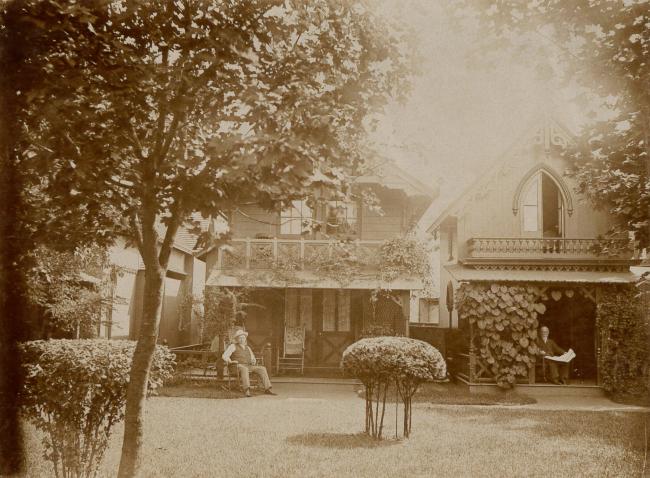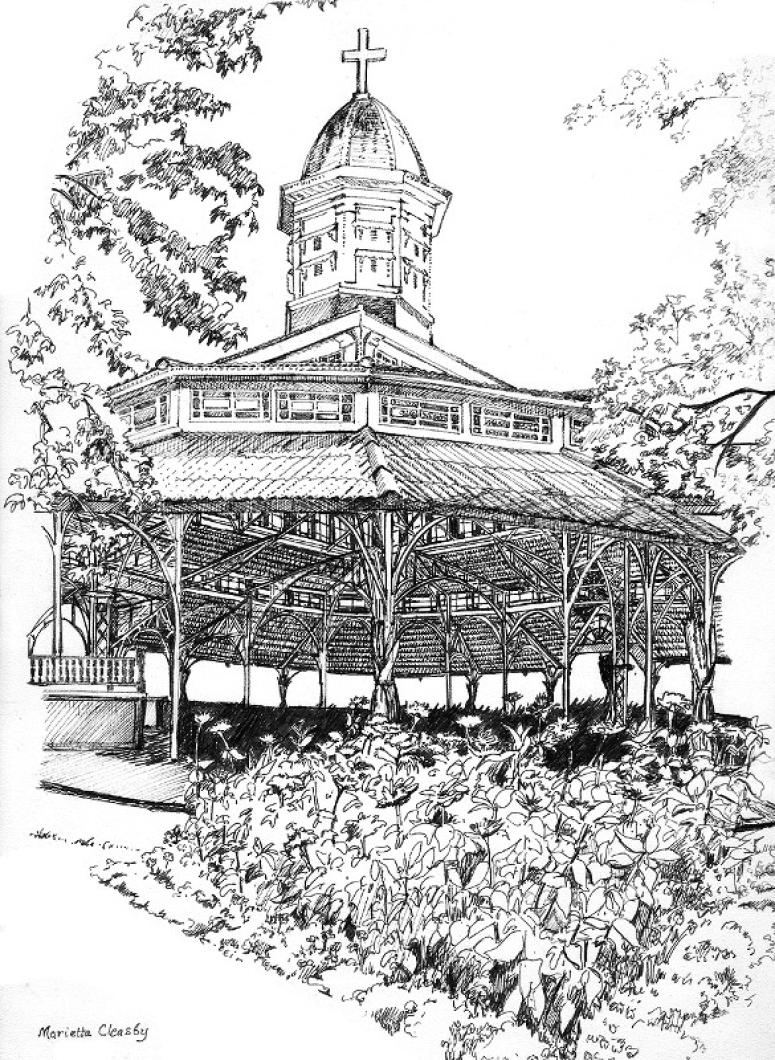The new Methodist Tabernacle was formally dedicated Wednesday forenoon, in the presence of a goodly number of the clergy and an immense congregation. Rev. Dr. Morrison had the general charge of the exercises, which opened with singing, followed by scripture readings by Revs. Messrs. Brown and Hamlin. Prayer was the offered by Rev. L. B. Bates, followed by singing, after which Bishop Foster arose and commenced his sermon, taking for his text Ephesians IV, 30: “And grieve not the Holy Spirit of God, whereby ye are sealed unto the day of redemption.”
The Bishop said he believed in preaching the doctrines, and every minister should faithfully preach his own, and freely accord to others an equal privilege. He then went into a consideration of the doctrine of the Trinity as a foundation on which to rest his discourse. God was eternally Father, Son and Holy Ghost, and there were no times when one, and another, and another of these phrases were developed. All of these, each being very God, dwelt together in harmony, and constituted the God-head. There were three forms of dissent from the position taken by Methodists - (1) the Aryans, who hold that the son is a very regal personage, taken out of the essence of God, and set him at the head of creation; and that the Holy Ghost is a function of God rather than a personal existence; (2) the Unitarians of New England, (who should rather be called Socinians), whose Christ is simply a man but of exalted character, unique among men; (3) the Calvanists, who believe and should preach - that God from all eternity picked out certain souls for salvation, whose number could not be increased or diminished, and that the function of the Holy Ghost was limited to putting its seal on these souls. The functions of the three personalities of God were then considered in their order - an order not in essence, but in economy. The function of the Father was to found in thought the universe, and in him were the archetypal forms. It was for the son to realize these forms along the line of eternal and ineffable convictions, and he appears in the Scriptures as the “Creator of the universe.” The Holy Ghost was the administrator of God’s economy in the realm of morals. The Bishop then proceeded to the consideration of his text, showing the appropriateness of the term “seal” by an illustration borrowed from the conveyance of property. He joined issue with those who held that Jesus “bought” the souls of sinners, declaring that the debt was never paid but remitted, and that He did a work by which regeneration and the sealing by the Holy Ghost became possible. The Holy Ghost was given to make good the blessing of redemption. The speaker did not believe that grace came to certain souls with irresistible power, but that a plan was provded so comprehensive that it offered to all the possibilities of the redeeming scheme. Three factors entered into a conversion - God, the truth, and the soul. He said the seal was God’s ineffable image planted in the heart, and illustrated his idea by the process of the silver-smith, who melts his ore and pours off the dross, until finally he sees his face clearly reflected in the molten mass. All the speaker’s points were most effectively made and skillfully elaborated, but his perhaps rather unsystematic method rendered a coherent abstract somewhat difficult.
At the conclusion of the discourse the 112d Psalm was read, with responses, and then Rev. Dr. Brown, in behalf of the building committee presented the Tabernacle to the Bishop, who duly responded. The exercises closed with the doxology, the benediction by Rev. Dr. Twombly.










Comments